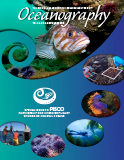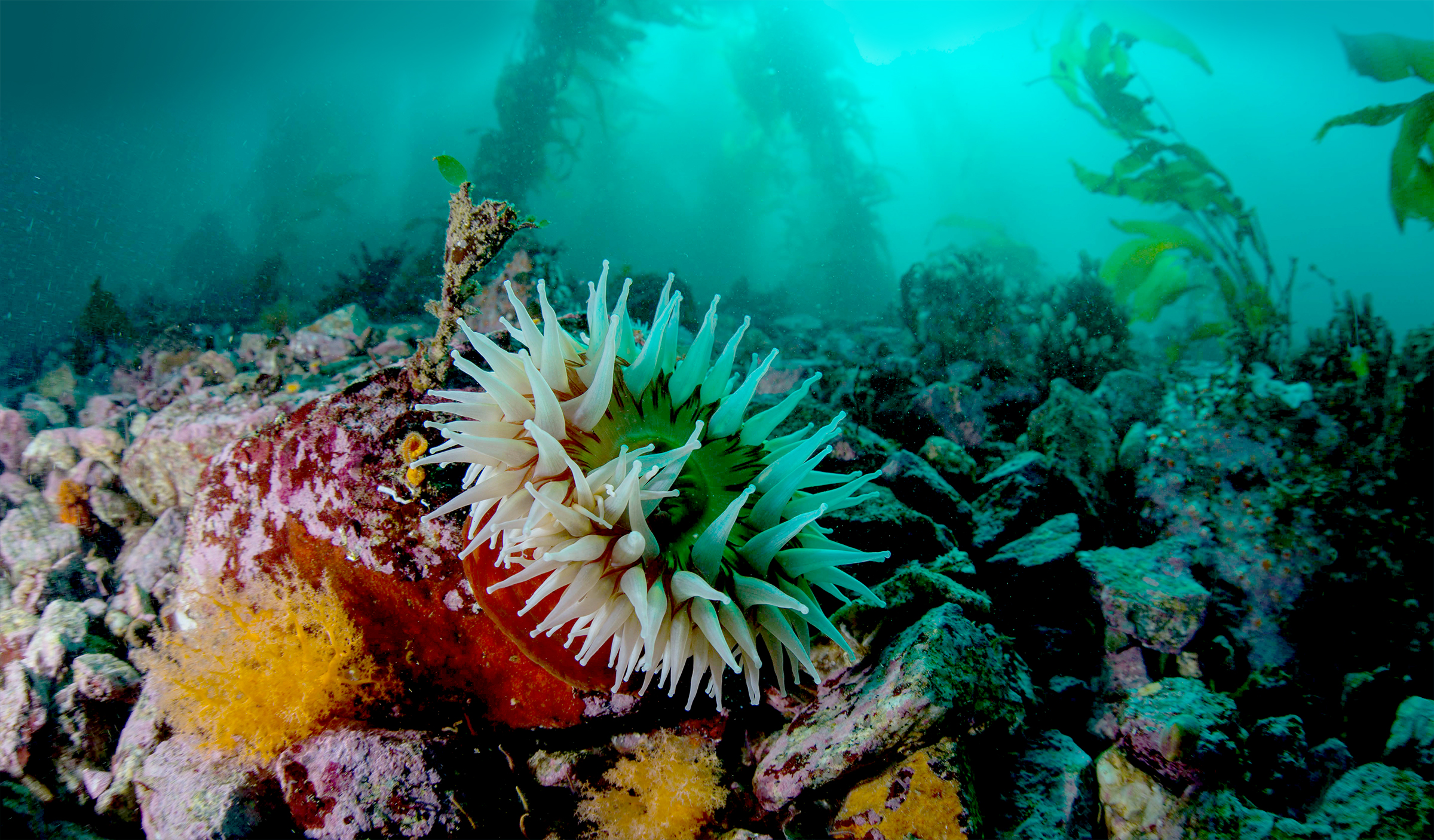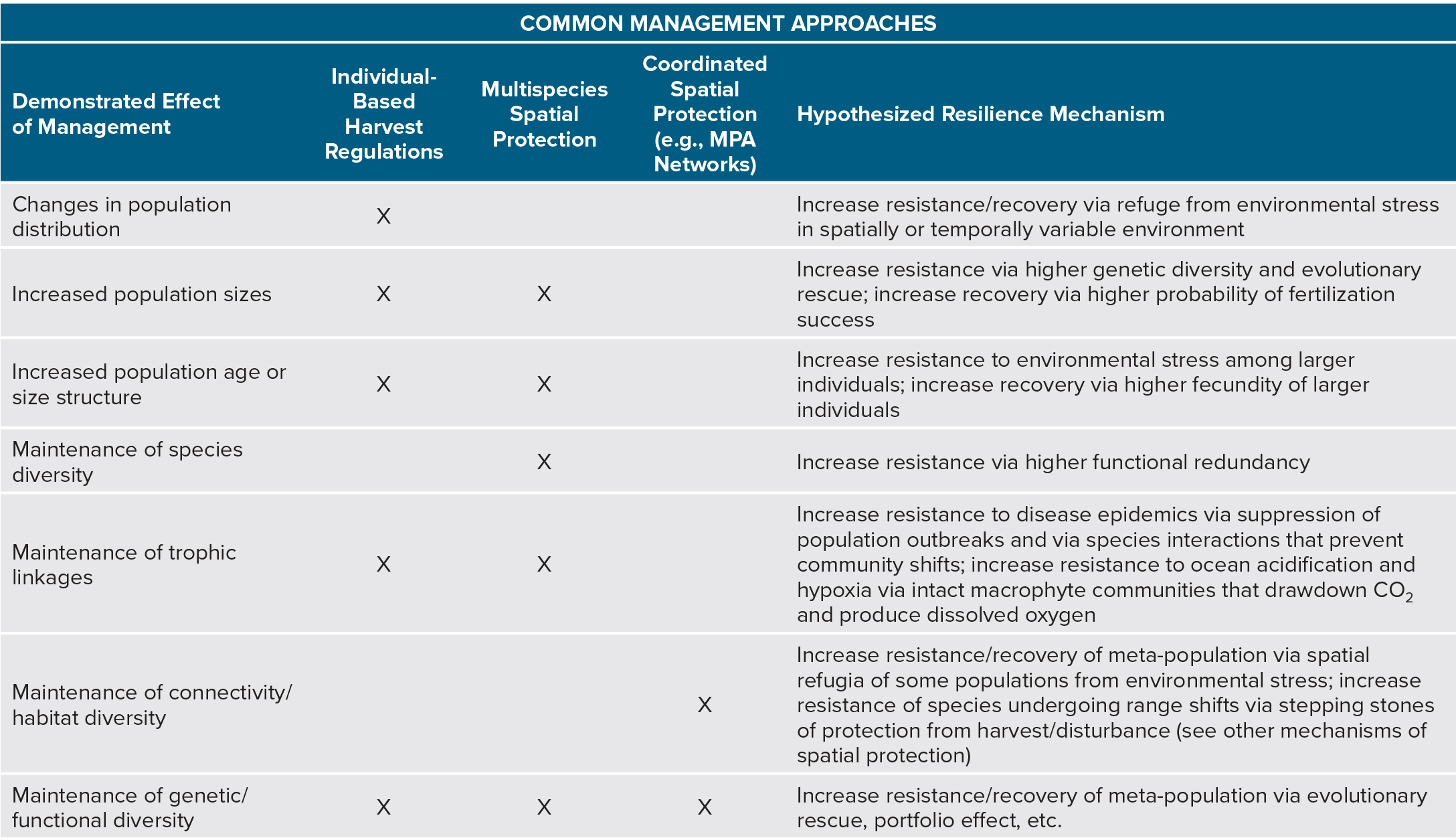Allison, G.W., S.D. Gaines, J. Lubchenco, and H.P. Possingham. 2003. Ensuring persistence of marine reserves: Catastrophes require adopting an insurance factor. Ecological Applications 13:S8–S24, https://doi.org/10.1890/1051-0761(2003)013[0008:EPOMRC]2.0.CO;2.
Alvarez-Romero, J.G., A. Munguia-Vega, and M. Beger. 2018. Designing connected marine reserves in the face of global warming. Global Change Biology 24:e671–e691, https://doi.org/10.1111/gcb.13989.
Anthony, K.R., P.A. Marshall, A. Abdulla, R. Beeden, C. Bergh, R. Black, C.M. Eakin, E.T. Game, M. Gooch, N.A. Graham, and others. 2015. Operationalizing resilience for adaptive coral reef management under global environmental change. Global Change Biology 21:48–61, https://doi.org/10.1111/gcb.12700.
Barange, M., T. Bahri, M.C.M. Beveridge, K.L. Cochrane, S. Funge-Smith, and F. Poulain, eds. 2018. Impacts of Climate Change on Fisheries and Aquaculture: Synthesis of Current Knowledge, Adaptation and Mitigation Options. Technical Paper 627, Food and Agriculture Organization of the United Nations, Rome, 654 pp.
Barneche, D.R., D. R. Robertson, C.R. White, and D.J. Marshall. 2018. Fish reproductive-energy output increases disproportionately with body size. Science 360:642–645, https://doi.org/10.1126/science.aao6868.
Barton, A., B. Hales, G.G. Waldbusser, C. Langdon, and R.A. Feely. 2012. The Pacific oyster, Crassotrea gigas, shows negative correlation to naturally elevated carbon dioxide levels: Implications for near-term ocean acidification effects. Limnology and Oceanography 57:698–710, https://doi.org/10.4319/lo.2012.57.3.0698.
Bates, A.E., N.S. Barrett, R.D. Stuart-Smith, N.J. Holbrook, P.A. Thompson, and G.J. Edgar. 2014. Resilience and signatures of tropicalization in protected reef fish communities. Nature Climate Change 4:62–67, https://doi.org/10.1038/nclimate2062.
Bates, A.E., R.S.C. Cooke, M.I. Duncan, G.J. Edgar, J.F. Bruno, L. Benedetti-Cecchi, I.M. Côté, J.S. Lefcheck, M.J. Costello, N. Barrett, and others. 2019. Climate resilience in marine protected areas and the ‘Protection Paradox.’ Biological Conservation 236:305–314, https://doi.org/10.1016/j.biocon.2019.05.005.
Bernhardt, J.R., and H.M. Leslie. 2013. Resilience to climate change in coastal marine ecosystems. Annual Review of Marine Science 5:371–392, https://doi.org/10.1146/annurev-marine-121211-172411.
Boettiger, C., and A. Hastings. 2012. Quantifying limits to detection of early warning for critical transitions. Journal of the Royal Society Interface 9:2,527–2,539, https://doi.org/10.1098/rsif.2012.0125.
Boettiger, C., and A. Hastings. 2013. From patterns to predictions. Nature 493:157–158, https://doi.org/10.1038/493157a.
Boonzaier, L., and D. Pauly. 2016. Marine protection targets: An updated assessment of global progress. Oryx 50:27–35, https://doi.org/10.1017/S0030605315000848.
Brander, K. 2010. Impacts of climate change on fisheries. Journal of Marine Systems 79:389–402, https://doi.org/10.1016/j.jmarsys.2008.12.015.
Bruno, J.F., I.M. Côté and L.T. Toth. 2019. Climate change, coral loss, and the curious case of the parrotfish paradigm: Why don’t marine protected areas improve reef resilience? Annual Review of Marine Science 11:307–334, https://doi.org/10.1146/annurev-marine-010318-095300.
Carilli, J.E., R.D. Norris, B. Black, S.M. Walsh, and M. McField. 2010. Century-scale records of coral growth rates indicate that local stressors reduce coral thermal tolerance threshold. Global Change Biology 16:1,247–1,257, https://doi.org/10.1111/j.1365-2486.2009.02043.x.
Carr, M.H., C.B. Woodson, O.M. Cheriton, D. Malone, M.A. McManus, and P.T. Raimondi. 2011. Knowledge through partnerships: Integrating marine protected area monitoring and ocean observing systems. Frontiers in Ecology and the Environment 9:342–350, https://doi.org/10.1890/090096.
Carr, M.H., S.P. Robinson, C. Wahle, G. Davis, S. Kroll, S. Murray, E.J. Schumacker, and M. Williams. 2017. The central importance of ecological spatial connectivity to effective coastal marine protected areas and to meeting the challenges of climate change in the marine environment. Aquatic Conservation: Marine and Freshwater Ecosystems 27:6–29, https://doi.org/10.1002/aqc.2800.
Carr, M.H., K.L.C. Bell, P. Leary, H.L. Sagar, and S. Tucker. 2018. How MPAs Enhance the Resilience of Coastal Marine Ecosystems and their Services: A Supplemental Report by the Marine Protected Areas Federal Advisory Committee’s Ecosystem Team to the Secretaries of US Department of Interior and Department of Commerce, 24 pp.
Carr, M.H., J.W. White, E. Saarman, J. Lubchenco, K. Milligan, and J.E. Caselle. 2019. Marine protected areas exemplify the evolution of science and policy. Oceanography 32(3):94–103, https://doi.org/10.5670/oceanog.2019.315.
Caselle, J.E., A. Rassweiler, S.L. Hamilton, and R.R. Warner. 2015. Recovery trajectories of kelp forest animals are rapid yet spatially variable across a network of temperate marine protected areas. Scientific Reports 5:14102, https://doi.org/10.1038/srep14102.
Caselle, J.E., K. Davis, and L.M. Marks. 2018. Marine management affects the invasion success of a non-native species in a temperate reef system in California, USA. Ecology Letters 21:43–53, https://doi.org/10.1111/ele.12869.
Chan, F., A.B. Boehm, J.A. Barth, E.A. Chornesky, A.G. Dickson, R.A. Feely, B. Hales, T.M. Hill, G. Hofmann, D. Ianson, and others. 2016. The West Coast Ocean Acidification and Hypoxia Science Panel: Major Findings, Recommendations, and Actions. California Ocean Science Trust, Oakland, CA, USA, 40 pp.
Chan, F., J.A. Barth, C.A. Blanchette, F.P. Chavez, O. Cheriton, G. Friederich, T.C. Gouhier, B. Gaylord, T.M. Hill, G.E. Hofmann, and others. 2017. Persistent spatial structuring of coastal ocean acidification in the California Current System. Scientific Reports 7:2526, https://doi.org/10.1038/s41598-017-02777-y.
Chavez, F.P., C. Costello, D. Aseltine-Neilson, H. Doremus, J.C. Field, S.D. Gaines, M. Hall-Arber, N.J. Mantua, B. McCovey, C. Pomeroy, and others. 2017. Readying California Fisheries for Climate Change. California Ocean Science Trust, Oakland, California, USA, 70 pp.
Cheung, W.W.L., J.L. Sarmiento, J. Dunne, T.L. Frölicher, V.W.Y. Lam, M.L.D. Palomares, R. Watson, and D. Pauly. 2013. Shrinking of fishes exacerbates impacts of global ocean changes on marine ecosystems. Nature Climate Change 3:254–258, https://doi.org/10.1038/nclimate1691.
Dietze, M.C. 2017. Prediction in ecology: A first-principles framework. Ecological Applications 27:2,048–2,060, https://doi.org/10.1002/eap.1589.
Fox, A.D., L.A. Henry, D.W. Corne, and J.M. Roberts. 2016. Sensitivity of marine protected area network connectivity to atmospheric variability. Royal Society Open Science 3:160494, https://doi.org/10.1098/rsos.160494.
Gaines, S.D., C. White, M.H. Carr, and S.R. Palumbi. 2010. Designing marine reserve networks for both conservation and fisheries management. Proceedings of the National Academy of Sciences of the United States of America 107:18,286–18,293, https://doi.org/10.1073/pnas.0906473107.
Game, E.T., M.E. Watts, S. Wooldridge, and H.P. Possingham. 2008. Planning for persistence in marine reserves: A question of catastrophic importance. Ecological Applications 18:670–680, https://doi.org/10.1890/07-1027.1.
Getz, W.M., C.R. Marshall, C.J. Carlson, L. Giuggioli, S.J. Ryan, S.S. Romañach, C. Boettiger, S.D. Chamberlain, L. Larsen, P. D’Odorico, and D. O’Sullivan. 2018. Making ecological models adequate. Ecology Letters 21:153–166, https://doi.org/10.1111/ele.12893.
Gibbs, M.T. 2009. Resilience: What is it and what does it mean for policymakers? Marine Policy 33:322–331, https://doi.org/10.1016/j.marpol.2008.08.001.
Grimm, V., and C. Wissel. 1997. Babel, or the ecological stability discussions: An inventory and analysis of terminology and a guide for avoiding confusion. Oecologia 109:323–334, https://doi.org/10.1007/s004420050090.
Harvell, C.D., D. Montecino-Latorre, J.M. Caldwell, J.M. Burt, K. Bosley, A. Keller, S.F. Heron, A.K. Salomon, L. Lee, O. Pontier, and others. 2019. Disease epidemic and a marine heat wave are associated with the continental-scale collapse of a pivotal predator (Pycnopodia helianthoides). Science Advances 5:eaau7042, https://doi.org/10.1126/sciadv.aau7042.
Helmuth, B., C.D.G. Harley, P.M. Halpin, M. O’Donnell, G.E. Hofmann, and C.A. Blanchette. 2002. Climate change and latitudinal patterns of intertidal thermal stress. Science 298:1,015–1,017, https://doi.org/10.1126/science.1076814.
Hendriks, I.E., Y.S. Olsen, L. Ramajo, L. Basso, A. Steckbauer, T.S. Moore, J. Howard, and C.M. Duarte. 2014. Photosynthetic activity buffers ocean acidification in seagrass meadows. Biogeosciences 11:333–346, https://doi.org/10.5194/bg-11-333-2014.
Hilborn, R., T.P. Quinn, D.E. Schindler, and D.E. Rogers. 2003. Biocomplexity and fisheries sustainability. Proceedings of the National Academy of Sciences of the United States of America 11:6,564–6,568, https://doi.org/10.1073/pnas.1037274100.
Holling, C.S. 1973. Resilience and stability of ecological systems. Annual Review of Ecology, Evolution, and Systematics 4:1–23, https://doi.org/10.1146/annurev.es.04.110173.000245.
Hughes, B.B., R. Beas-Luna, A.K. Barner, K. Brewitt, D.R. Brumbaugh, E.B. Cerny-Chipman, S.L. Close, K.E. Coblentz, K.L. de Nesnera, S.T. Drobnitch, and others. 2017. Long-term studies contribute disproportionately to ecology and policy. BioScience 67:271–281, https://doi.org/10.1093/biosci/biw185.
Hughes, T.P., N.A.J. Graham, J.B.C. Jackson, P.J. Mumby, and R.S. Steneck. 2010. Rising to the challenge of sustaining coral reef resilience. Trends in Ecology & Evolution 25:633–642, https://doi.org/10.1016/j.tree.2010.07.011.
Hughes, T.P., J.T. Kerry, M. Álvarez-Noriega, J.G. Álvarez-Romero, K.D. Anderson, A.H. Baird, R.C. Babcock, M. Beger, D.R. Bellwood, R. Berkelmans, and others. 2017. Global warming and recurrent mass bleaching of corals. Nature 543:373–377, https://doi.org/10.1038/nature21707.
Kelly, M.W. 2019. Adaptation to climate change through genetic accommodation and assimilation of plastic phenotypes. Philosophical Transactions the Royal Society B, https://doi.org/10.1098/rstb.2018.0176.
Koweek, D.A., K.J. Nickols, P.R. Leary, S.Y. Litvin, T.W. Bell, T. Luthin, S. Lummis, D.A. Mucciarone, and R.B. Dunbar. 2017. A year in the life of a central California kelp forest: Physical and biological insights into biogeochemical variability. Biogeosciences 14:31–44, https://doi.org/10.5194/bg-14-31-2017.
Krumhansl, K.A., D.K. Okamoto, A. Rassweiler, M. Novak, J.J. Bolton, K.C. Cavanaugh, S.D. Connell, C.R. Johnson, B. Konar, S.D. Ling, and F. Micheli. 2016. Global patterns of kelp forest change over the past half-century. Proceedings of the National Academy of Sciences of the United States of America 113:13,785–13,790, https://doi.org/10.1073/pnas.1606102113.
Lafferty, K.D. 2004. Fishing for lobsters indirectly increases epidemics in sea urchins. Ecological Applications 14:1,566–1,573, https://doi.org/10.1890/03-5088.
Lester, S.E., B.S. Halpern, K. Grorud-Colvert, J. Lubchenco, B.I. Ruttenberg, S.D. Gaines, S. Airame, and R.R. Warner. 2009. Biological effects within no-take marine reserves: A global synthesis. Marine Ecology Progress Series 384:33–46, https://doi.org/10.3354/meps08029.
Levin, S.A., and J. Lubchenco. 2008. Resilience, robustness, and marine ecosystem-based management. BioScience 58:27–32, https://doi.org/10.1641/B580107.
Ling, S.D., C.R. Johnson, S.D. Frusher, and K.R. Ridgway. 2009. Overfishing reduces resilience of kelp beds to climate-driven catastrophic phase shift. Proceedings of the National Academy of Sciences of the United States of America 106:22,341–22,345, https://doi.org/10.1073/pnas.0907529106.
Ling, S.D., and C.R. Johnson. 2012. Marine reserves reduce risk of climate-driven phase shift by reinstating size- and habitat-specific trophic interactions. Ecological Applications 22:1,232–1,245, https://doi.org/10.1890/11-1587.1.
McClanahan, T.R., and S. Mangi. 2000. Spillover of exploitable fishes from a marine park and its effect on the adjacent fishery. Ecological Applications 10:1,792–1,805, https://doi.org/10.1890/1051-0761(2000)010[1792:SOEFFA]2.0.CO;2.
McClenachan, L., S. Scyphers, and J.H. Grabowski. 2019. Views from the dock: Warming waters, adaptation and the future of Maine’s lobster fishery. Ambio 1–12, https://doi.org/10.1007/s13280-019-01156-3.
Mellin, C., M.A. MacNeil, A.J. Cheal, M.J. Emslie, and M.J. Caley. 2016. Marine protected areas increase resilience among coral reef communities. Ecology Letters 19:629–637, https://doi.org/10.1111/ele.12598.
Micheli, F., A. Saenz-Arroyo, A. Greenley, L. Vazquez, J.A.E. Montes, M. Rossetto, and G.A. DeLeo. 2012. Evidence that marine reserves enhance resilience to climatic impacts. PLOS ONE 7:e40832, https://doi.org/10.1371/journal.pone.0040832.
Mumby, P.J., and A. Hastings. 2008. The impact of ecosystem connectivity on coral reef resilience. Journal of Applied Ecology 45:854–862, https://doi.org/10.1111/j.1365-2664.2008.01459.x.
Mumby, P.J., I.A. Elliott, C.M. Eakin, W. Skirving, C.B. Paris, H.J. Edwards, S. Enríquez, R. Iglesias-Prieto, L.M. Cherubin, and J.R. Stevens. 2011. Reserve design for uncertain responses of coral reefs to climate change. Ecology Letters 14:132–140, https://doi.org/10.1111/j.1461-0248.2010.01562.x.
Mumby, P.J., I. Chollett, Y.-M. Bozec, and N.H. Wolff. 2014. Ecological resilience, robustness and vulnerability: How do these concepts benefit ecosystem management. Current Opinion in Environmental Sustainability 7:22–27, https://doi.org/10.1016/j.cosust.2013.11.021.
Nickols, K.J., J.W. White, D. Malone, M.H. Carr, R.M. Starr, M.L. Baskett, A. Hastings, and L.W. Botsford. 2019. Setting ecological expectations for adaptive management of marine protected areas. Journal of Applied Ecology, https://doi.org/10.1111/1365-2664.13463.
Olds, A.D., K.A. Pitt, P.S. Maxwell, and R.M. Connolly. 2012. Synergistic effects of reserves and connectivity on ecological resilience. Journal of Applied Ecology 49:1,195–1,203, https://doi.org/10.1111/jpe.12002.
Palumbi, S.R., T.G. Evans, M.H. Pespeni, and G.N. Somero. 2019. Present and future adaptation of marine species assemblages: DNA-based insights into climate change from studies of physiology, genomics, and evolution. Oceanography 32(3):82–93, https://doi.org/10.5670/oceanog.2019.314.
Pershing, A.J., M.A. Alexander, C.M. Hernandez, L.A. Kerr, A.L. Bris, K.E. Mills, J.A. Nye, N.R. Record, H.A. Scannell, J.D. Scott, and others. 2015. Slow adaptation in the face of rapid warming leads to collapse of the Gulf of Maine cod fishery. Science 350:809–812, https://doi.org/10.1126/science.aac9819.
Pespeni, M.H., E. Sanford, B. Gaylord, T.M. Hill, J.D. Hosfelt, H.K. Jaris, M. LaVigne, E.A. Lenz, A.D. Russell, M.K. Young, and S.R. Palumbi. 2013. Evolutionary change during experimental ocean acidification. Proceedings of the National Academy of Sciences of the United States of America 110:6,937–6,942, https://doi.org/10.1073/pnas.1220673110.
Petchey, O.L., M. Pontarp, T.M. Massie, S. Kefi, A. Ozgul, M. Weilenmann, G.M. Palamara, F. Altermatt, B. Matthews, J.M. Levine, and others. 2015. The ecological forecast horizon, and examples of its uses and determinants. Ecology Letters 18:597–611, https://doi.org/10.1111/ele.12443.
Pinsky, M.L., and N.J. Mantua. 2014. Emerging adaptation approaches for climate ready fisheries management. Oceanography 27(4):146–159, https://doi.org/10.5670/oceanog.2014.93.
Roberts, C.M., B.C. O’Leary, D.J. McCauley, P.M. Cury, C.M. Duarte, J. Lubchenco, D. Pauly, A. Saenz-Arroyo, U.R. Sumaila, R.W. Wilson, and others. 2017. Marine reserves can mitigate and promote adaptation to climate change. Proceedings of the National Academy of Sciences of the United States of America 114:6,167–6,175, https://doi.org/10.1073/pnas.1701262114.
Roberts, D.A., S.N.R. Birchenough, C. Lewis, M.B. Sanders, T. Bolam, and D. Sheahan. 2012. Ocean acidification increases the toxicity of contaminated sediments. Global Change Biology 19:340–351, https://doi.org/10.1111/gcb.12048.
Scheffer, M.,J. Bascompte, W.A. Brock, V. Brovkin, S.R. Carpenter, V. Dakos, H. Held, E.H. van Nes, M. Rietkerk, and G. Sugihara. 2009. Early-warning signals for critical transitions. Nature 461:53–59, https://doi.org/10.1038/nature08227.
Thompson, A.R., D.C. Chen, L.W. Guo, J.R. Hyde, and W. Watson. 2017. Larval abundances of rockfishes that were historically targeted by fishing increased over 16 years in association with a large marine protected area. Royal Society Open Science 4:170639, https://doi.org/10.1098/rsos.170639.
Wernberg, T., S. Bennett, R.C. Babcock, T.D. Bettignies, K. Cure, M. Depczynski, F. Dufois, J. Fromont, C.J. Fulton, R.K. Hovey, and others. 2016. Climate-driven regime shift of a temperate marine ecosystem. Science 353:169–172, https://doi.org/10.1126/science.aad8745.
White, E.R. 2019. Minimum time required to detect population trends: The need for long-term monitoring programs. BioScience 69:40–46, https://doi.org/10.1093/biosci/biy144.
White, J.W., L.W. Botsford, A. Hastings, M.L. Baskett, D.M. Kaplan, and L.A.K. Barnett. 2013. Transient responses of fished populations to marine reserve establishment. Conservation Letters 6:180–191, https://doi.org/10.1111/j.1755-263X.2012.00295.x.
Wilson, J.R., J.D. Prince, and H.S. Lenihan. 2010. A management strategy for sedentary nearshore species that uses marine protected areas as a reference. Marine Coastal Fisheries: Dynamics, Management, and Ecosystem Science 2:14–27, https://doi.org/10.1577/C08-026.1.
Yachi, S., and M. Loreau. 1999. Biodiversity and ecosystem productivity in a fluctuating environment: The insurance hypothesis. Proceedings of the National Academy of Sciences of the United States of America 96:1,463–1,468, https://doi.org/10.1073/pnas.96.4.1463.




